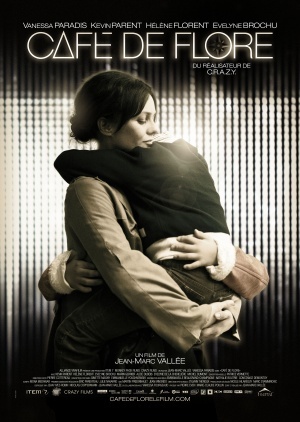Women in Psychology: Anna Freud
The philosophic contributions to the formal discipline of psychology have primarily been dominated by male visionaries, but many notable women pioneered a role in the history of psychology between 1850 and 1950. Sigmund Freud was not the only Freudian to establish credibility in the field of psychology, as his youngest daughter Anna Freud pursued a career in psychology and made significant historic contributions. Anna’s background, theoretical perspective, and contributions to the field of psychology will be discussed.
Anna Freud
Sigmund and Martha Freud had six children, Anna being born the youngest in December 1895. She was a mischievous child who admired her father and his work, but grew estranged from her mother and five siblings. Sigmund reciprocated the adoration towards Anna and once wrote of her saying, “Anna has become downright beautiful through naughtiness…” (The Anna Freud Centre, 1993, ¶ 2). Anna often spoke of her feelings of rivalry against her older sister Sophie, being labeled the beautiful Freud child and Anna being labeled the brains of the family. The bond with Anna’s mother Martha was strained as Anna and her siblings were mostly raised by their nanny, Josefine Cihlarz. Anna completed her education in 1912 at Cottage Lyceum in Vienna and was uncertain about her future career path. She traveled to England in 1914 to improve her English language skills but had to return to Vienna following the declaration of war. Anna earned teaching credentials and began teaching at her old school. She expressed interest in the field of child psychology after spending time observing and teaching her pupils. She chose to abandon being only a teacher to help children and pursued a career in her father’s footsteps of psychoanalysis (The Anna Freud Centre, 1993).
Sigmund Freud increased Anna’s interest in the field of psychology at the tender age of 14 when he allowed her to read his writings over psychoanalysis. Sigmund also began analyzing Anna’s nighttime dreams in 1918, and she accompanied him to the International Psychoanalytical Congress in 1920. Anna met many of her father’s colleagues and friends, including psychoanalyst Lou Andreas-Salome, who soon became Anna’s confidante. The Vienna Psychoanalytical Society graciously accepted Anna as a member following her presentation of Beating Fantasies and Daydreams. She continued to attend psychoanalytic meetings, follow her father’s work and publications, analyze patients, and translate papers. Anna had established her role as a significant contributor to the field of child psychology when she began her psychoanalytical practice with young children. She went on to teach seminars at the Vienna Psychoanalytic Training Institute and publish her first book, Technique of Child Analysis (The Anna Freud Centre, 1993).
Sigmund Freud became dreadfully ill following a diagnosis of cancer and endured multiple surgical operations. He required constant nursing care in order to heal. Anna did not want to leave her father’s side and provided full-time nursing care, but she managed to continue her work with children. Sigmund unfortunately passed away from his illness in 1939, around the same time the second war began. Anna continued to follow in her father’s footsteps with psychoanalysis, but focused on developing techniques for studying children rather than adults. Anna became fully immersed in developing effective techniques to psychoanalyze children, which are still implemented and utilized in modern child psychology as well as ego psychology (The Anna Freud Centre, 1993).
Theoretical Positions
Anna Freud is known as her father’s successor with her research and work in ego psychology and child psychology. Anna remained faithful to her father’s central theme and ideas of psychodynamic theory despite some of Sigmund’s followers abandoning his beliefs, but she primarily concentrated on the psyche dynamics rather than the psyche structures. She wrote and published The Ego and the Mechanisms of Defense, which described how the defenses work and clearly stated the ego is the “seat of observation from which we observe the work of the id and the superego and the unconscious generally, and deserves study in its own right” (Boeree, 1998, ¶ 2). Followers of Sigmund and Anna Freud’s teachings are usually represented by ego psychology. Modern day ego psychology remains loyal to Freud’s work with a psychoanalytic foundation but is more practical and ordinary of the ego in psychoanalytic application (Boeree, 1998). Anna mentored Erik Erikson, who is well-known for his expansion work in the field of ego psychology and psychoanalysis. Anna’s mentorship impacted Erikson’s academic and professional career in psychology. He and Anna met when he tutored children at the Heitzing School run by Anna’s longtime friend, Dorothy Burlingham. Anna observed Erikson’s skillful manner with children and expressed interest in guiding him to learn more about child psychology (Erik Erikson, 2010).
Child psychology was Anna’s main passion. She devoted most of her time and energy to studying and analyzing children suffering from traumas, mostly from the impact of war. Some of these children were predisposed to enduring traumas, as many were handicapped or blind. Anna often stated she was glad she did not have any children of her own, despite the many years of her life she dedicated to helping children that she barely knew (Brainy Quote, 2010). Sigmund had concentrated entirely on adults, which sorted through childhood recollections instead of present events. Anna desired to work with children suffering from present traumas to prevent psychological complications in adulthood. Anna observed children and their own environment and became an authoritative therapist to deal with the transference problem. She was reported as being a caring adult that was not a substitute parent or new playmate during therapy sessions. Her technique enabled a stable and trusting relationship between therapist, child, and the parents. The biggest obstacle in Anna’s counseling was communication among children and therapists. Adults are capable of verbally conveying thoughts, emotions, ideas, and beliefs while younger children are inept to do so accordingly. Anna was unable to use her father’s talking cure with children, because of their inability to verbalize their thoughts. Children tend to express their emotions much differently than adults, which influenced Anna to construct techniques specifically designed to help children (Boeree, 1998).
Anna was responsible for setting up a war nursery at the Hampstead Child Therapy Clinic. She and her life-long friend Dorothy Burlingham managed the clinic and encouraged the children at the nursery to form attachments to cope with the trauma of the war. Working directly with the children influenced Anna to publish numerous studies about children under stress during the war, Young Children in Wartime, Infants Without Families, and War and Children (Cherry, 2010). She was able to further her observation of parental deprivation among young children during traumatic times when orphans from a concentration camp were placed in the Bulldogs Bank home. Anna observed, analyzed and reported her results in An Experiment in Group Upbringing, which reported the children’s natural ability to form close attachments with peers as a parental substitute (The Anna Freud Centre, 1993).
The Hampstead nursery closed in 1945 as a result of the war ending. The Hampstead Child Therapy Course and Clinic opened under the management of Anna shortly after the Hampstead nursery closed. The clinic provided counseling, analytic therapy, and training in child analysis and treatment, which soon became the world’s most comprehensive and largest facility dedicated to the analysis and treatment of children. Anna served as director, training analyst, and consultant of the clinic from 1952 until she passed away in 1982. The New York Times released a quote written by Anna about her productive work with children:
I started out as an elementary-school teacher. I changed from that to the field of analysis and child analysis. From then on, I moved constantly back and forth, from the theoretical study of these problems to their practical application. I agree that one has to have special luck to do this, and that most people do not have this (Reuters, 1982, ¶ 2).
Conclusion
Anna Freud was born in 1895 and passed away in 1982. During those 87 years, she made numerous significant contributions to the field of psychology. Anna’s academic and professional career represents the leaps and bounds in understanding human nature, behaviors, emotions, and mental processes in modern day psychology. Anna persevered as being labeled the daughter of Sigmund Freud and became a notable female psychologist in a time and field where men dominated the research and publications. She truly is a successor of her father and has impacted the field of psychology as a formal discipline with revolutionary observation and therapeutic techniques. Anna’s work is historical and worthy of being discussed, regardless if some modern day psychologists agree or disagree with any of the Freudian theories.
References
Boeree, G. C. (1998). Anna Freud. Personality Theories. Retrieved March 8, 2010 from
http://webspace.ship.edu/cgboer/annafreud.html
Brainy Quote. (2010). Anna Freud quotes. Retrieved March 8, 2010 from
http://www.brainyquote.com/quotes/authors/a/anna_freud.html
Cherry, K. (2010). Anna Freud biography. About Psychology. Retrieved March 8, 2010 from
http://psychology.about.com/od/profilesofmajorthinkers/p/bio_annafreud.htm
Erik Erikson. (2010). Soylent Communications. NNDB. Retrieved March 8, 2010 from
http://www.nndb.com/people/151/000097857/
Goodwin, C. J. (2005). A history of modern psychology (2nd ed.). Hoboken, NJ: Wiley
Reuters. (1982). Anna Freud: Psychoanalyst dies in London at 86. On This Day: Obituary. The
New York Times. Retrieved March 8, 2010 from
http://www.nytimes.com/learning/general/onthisday/bday/1203.html
The Anna Freud Centre. (1993). About Anna Freud. A centre of learning: A centre of practice.
Freud Museum Publications.


